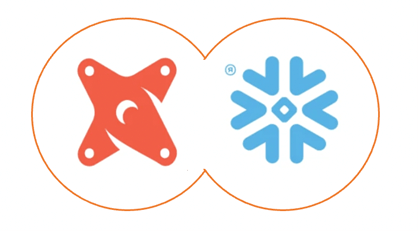Modernize Your Data Infrastructure with dbt and Snowflake
Leveraging dbt and Snowflake for Accelerated Data Transformation
Transforming Your Data Landscape: A Guide to dbt and Snowflake Integration
Introduction to Data Modernization

Today, data dwells everywhere. Data modernization enables informed decision-making by pulling data out of systems more reliably. Data modernization is a multi-step process of improving access to information, providingquick data insights and enabling better business intelligence. A data modernization strategy helps you create data management and data governance practices that optimize intelligence tools while enhancing data privacy and security across all cloud, multi-cloud, and hybrid IT environments. So what’s the appeal of this new infrastructure? Modern data architectures, like cloud data warehouses and cloud data lakes, empower more people to leverage analytics for insights more efficiently.
Introduction to dbt and Snowflake Integration
Benefits of Using dbt with Snowflake for Data Modernization
Practical Tips for Implementing dbt and Snowflake in Your Data Projects
Case Studies: Real-world Examples of dbt and Snowflake in Action
Getting Started with dbt: Installation and Setup Guide
Optimizing Data Transformation Pipelines with dbt and Snowflake
Best Practices for Data Modeling with dbt and Snowflake
Monitoring and Performance Tuning: Ensuring Efficiency in dbt-Snowflake Workflows
In this blog, we will focus on two key products, dbt and Snowflake. These products are used by various enterprises as part of the data modernization journey. Snowflake’s Data Cloud helps organizations to transform, integrate, and analyze their data whiledbt helps enterprises to transform data where it lives, automatically inferring dependency graphs to run transformation models. Before we deep dive into our topic of data modernization and understand how dbt helps data engineers in daily life, let’s have a quick introduction to dbt.
What is dbt and How Does It Work?
If you’ve heard of a data engineer or know about data modelling, then you’re probably familiar with dbt. As per the dbt official website, dbt is a development framework that combines modular SQL with software engineering best practices to make data transformation reliable, fast, and fun.
In other words, it is a command-line tool that enables data analysts and engineers to transform data in their warehouses simply by writing select statements. dbt has emerged as the default framework to engineer analytical data. This is where you define and test your models. Compare it with Spring Boot in the microservices world. dbt has adapters for most databases, query engines, and data warehouses like Snowflake.

Differentiating Factors of dbt from Other Tools
Dbt is different from other tools on various parameters but let’s focus on three key areas as below:
Data Quality
dbt helps to eliminate the need to rewrite the same code over and over again. Data engineers can write a model once and then reference it within their other models. This creates more dependable code because you’re using the same logic in all your models. It not only helps to increase the data quality, but also it saves analysts a lot of precious time.
Another way dbt increases data quality is by encouraging casting and renaming directly at the source. But, essentially, you do all of the smaller data “housekeeping” tasks in your base models. These are the models that select directly from the raw source tables.
Then, your other models only reference these base models rather than any of the raw data. This prevents errors like accidentally casting your dates to two different types, or giving the same column two different names.
Speed
At times, data models might take many hours to run and it is not feasible to get your data insights in time if data models take hours to run. If you’re using a transformation tool other than dbt then you probably understand the need for speed.
Dbt enables you to organize your code into the base and intermediary data models which makes running your core data models a whole lot faster. Because your models are also modular, you run them once and reference them in your other models. You aren’t wasting time and resources running the same blocks of code over and over again. Models are run in parallel by using a technique called “multithreading”. Different models are processed on different threads, allowing them to be executed together.
Dbt models are also run in parallel when being executed using the dbt run command. Models that have dependencies aren’t run until their upstream models are completed but models that don’t depend on one another are run at the same time. This increases throughput and minimizes run time.
Documentation
Documentation is one of the most underrated differentiators in the world of analytics and data modelling. Your data is only as useful as how well it is documented. Not only does it make successfully onboarding new team members three times as fast, but it gives everyone on the team a deeper understanding of the data.
If you’re doing analytics right, you’re constantly asking questions about your data. When questions are asked, dbt documentation can be there to provide the answers. Even people who have been at the company for years are going to have to reference data definitions every once in a while. Dbt allows you to add descriptions of your models right into the code itself. It makes it easy to keep track of column names and descriptions as well. This documentation is written in a .yml corresponding to the directory in which your model is stored.
Exploring Snowflake’s Data Cloud and Its Advantages
Snowflake’s Data Cloud is powered by an advanced data platform provided as a self-managed service. Snowflake enables data storage, processing, and analytic solutions that are faster, easier to use, and far more flexible than traditional offerings.
The Snowflake data platform is not built on any existing database technology or “big data” software platforms such as Hadoop. Instead, Snowflake combines a completely new SQL query engine with an innovative architecture natively designed for the cloud. To the user, Snowflake provides all of the functionality of an enterprise analytic database, along with many additional special features and unique capabilities.
Why dbt and Snowflake for Data Modernization?
Snowflake data cloud is hosted as a Software-as-a-Service (SaaS) which is faster, user-friendly, and more flexible than a traditional data warehouse. Snowflake’s architecture is developed using a SQL database engine with an architecture specifically designed for the cloud environment. Snowflake is built using multi-cluster, shared data architecture- This makes the Data Storage and Compute layer, and the query processing layer separated.
dbt quickly became a cornerstone of the modern data stack for Snowflake customers. Its data transformation technology allows the joint customers to deploy their analytics code to the Data Cloud with much greater speed and agility, drawing on best practices from the software development world such as modularity, portability and CI/CD.
Technically dbt can be used with Snowflake for the following features:
- Combining transformation logic – DBT groups similar transformation logic together using dbt tags.
- Stored Procedure – The stored procedures created in dbt are shown in the models, which could be accessed and modified.
- Converting tables to views – It is sufficient to change the materialization in a single config file to change a table to a view.
Overall, DBT provides a unique level of DataOps functionality that enables Snowflake to do what it does well while abstracting the underlying layers that provide this support.
dbt and Snowflake integration
It is really easy to set up dbt and snowflake integration. The only prerequisites for this integration setup are to have access to an email account for signing up for Snowflake and dbt Cloud.
Once you have set up dbt Cloud and Snowflake through trial accounts, you can connect dbt Cloud and Snowflake with partner connect or manually.
More details for Snowflake integration are available below link:
https://docs.getdbt.com/docs/get-started/getting-started/getting-set-up/setting-up-snowflake

Leveraging dbt’s Orchestration Layer for Data Transformation
In a nutshell, dbt acts as an orchestration layer on top of your data warehouse to improve and accelerate your data transformation and integration process. With dbt, anyone who knows how to write SQL SELECT statements has the power to build models, write tests, and schedule jobs to produce reliable, actionable datasets for analytics.. dbt works by pushing down your code—doing all the calculations at the database level—making the entire transformation process faster, more secure, and easier to maintain.
Conclusion
Data modernization initiatives for any organisation involve the uplift of infrastructure and processes related to data pipelines, security, data governance, data catalogue, data quality etc.
With the right data governance strategy and data democratization measures in place, more people can self-serve curated, trusted data — scaling data-driven decision-making across the business. It helps you identify high-value data combinations and integrations. It also helps people rapidly identify opportunities at the moment — so they can take advantage of something that might have otherwise been missed, and ultimately generate more revenue.
Apart from data governance, the process of extraction, transformation, and load (ETL) is also central to any data warehousing initiative. With advances in cloud data warehouse architectures like Snowflake, customers are also benefiting from the alternative approach of extraction, load, and transformation (ELT), where data processing is pushed to the database.
Before cloud data warehousing solutions like Snowflake software, carrying out post-load transformations on an onsite legacy data warehouse was slow, impractical, and expensive. But now, post-load ELT transformations are easier and more affordable to achieve. There are various products in the industry for data warehousing and data modelling and enterprises have to go through a detailed evaluation process to pick the right products based on the organisation’s needs.
Learn More About dbt and Snowflake Integration
https://docs.getdbt.com/docs/get-started/getting-started/getting-set-up/setting-up-snowflake


